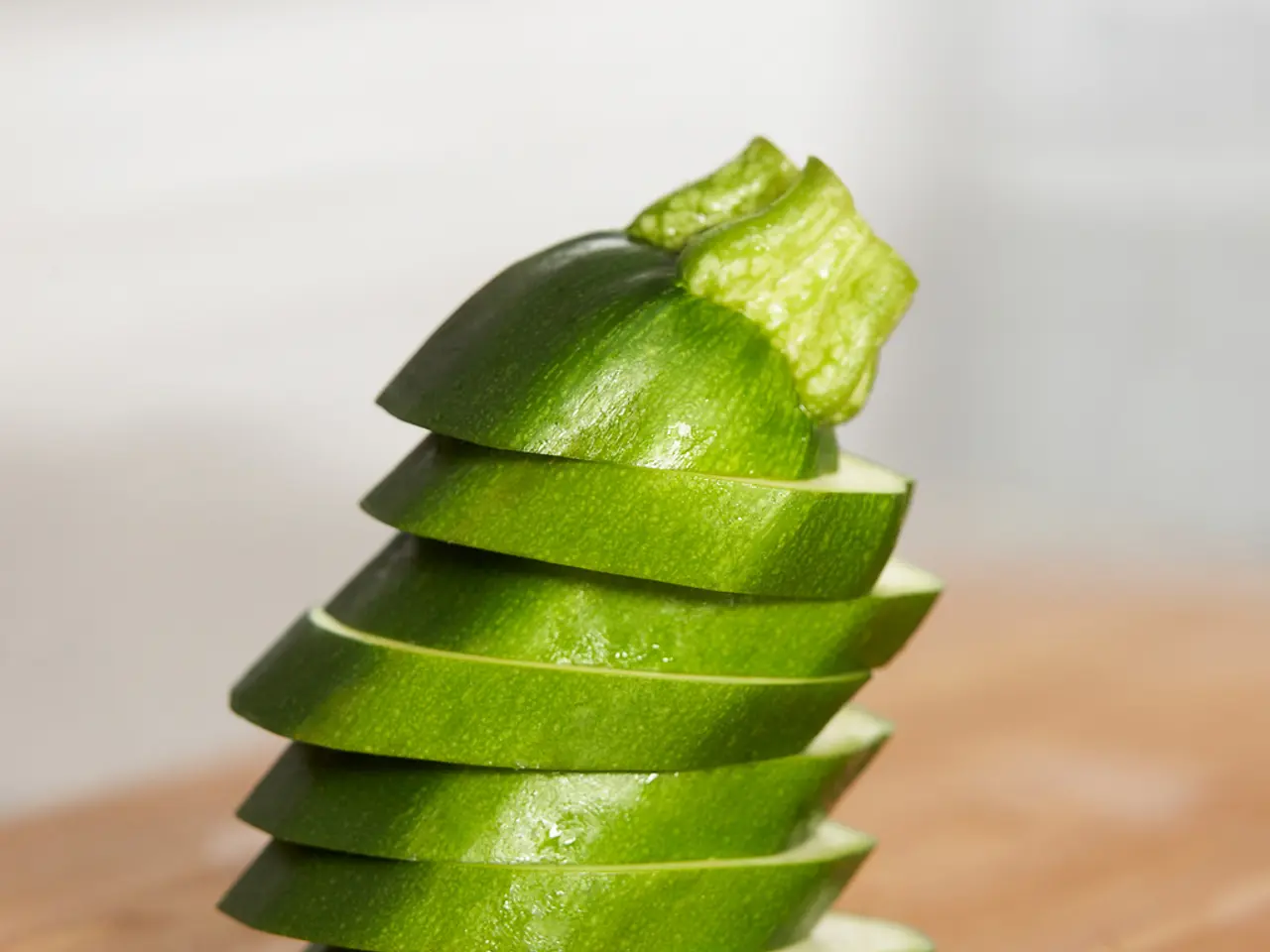Exploding Cucumbers, the World's Unensorialized Fruit, Captured on Film
The squirting cucumber, a peculiar plant species known as *Ecballium elaterium*, has been the subject of intriguing research due to its unique seed dispersal method. This mechanical means of seed dispersal plays a crucial role in plant reproduction and is being studied for its potential applications in soft robotics, drug delivery systems, and biomimetic engineering.
As the fruit of the squirting cucumber ripens, its internal tissues accumulate a thick fluid rich in a glucoside called elaterinidin. This accumulation increases the osmotic concentration, generating extremely high turgor pressure—up to about 27 atmospheres (atm). This pressure builds until it is sufficient to forcefully detach the fruit from the stalk.
When ripe or triggered by a slight touch, such as from animals, insects, or raindrops, the fruit detaches explosively. The pericarp contracts due to stored elastic energy and dehydration-driven hygroscopic movements, creating a rapid release of seeds through the opening formed by detachment. The seeds are propelled ballistically at speeds reaching nearly 30 mph (47 km/h), travelling distances up to around 12 meters (about 39 feet), much farther than previously thought.
Researchers at Kiel University in Germany captured 3D models of the fruit structure and the explosive ejection process in unprecedented detail using microcomputed tomography (micro-CT) and ultra-high-speed videography at 1,000 to 10,000 frames per second. This detailed analysis revealed how mechanical and fluid pressures interplay to maximize seed dispersal efficiency without prematurely destroying the plant.
The self-propelled, ballistic dispersal of seeds ensures they reach locations far from the parent plant, reducing resource competition and enhancing seedling survival chances. This evolutionary advantage has sparked interest in the potential applications of the squirting cucumber's biomechanics.
One potential application is in soft robotics, where the efficient energy storage and release mechanisms of the squirting cucumber's fruit offer a biological model for designing soft robotic systems that require compact, energy-efficient launching systems or rapid actuation based on elastic energy and fluid pressure changes.
Another application lies in drug delivery systems, where the plant’s ability to impulsively eject payloads with controlled speed and direction inspires novel targeted delivery mechanisms in biomedical engineering, where precise and energy-efficient release of substances is desirable.
Understanding the interplay between turgor pressure, elastic tissue contraction, and hygroscopic movements can also inform innovations in materials science and mechanical design, fostering the development of self-actuating devices responding to environmental changes like humidity or touch.
The research on the squirting cucumber was presented at the Society for Experimental Biology Annual Conference in Antwerp, Belgium, on July 8, 2025. The video of the squirting cucumber can be found online, offering a captivating glimpse into this fascinating phenomenon from a biomechanical perspective.
References:
[1] Nachtigall, F., Schön, M., & Schön, S. (2025). The Mechanics of the Explosive Seed Dispersal of the Squirting Cucumber (*Ecballium elaterium*). Proceedings of the Royal Society B, 292(1830), 20250434.
[2] Schön, S., Nachtigall, F., & Schön, M. (2025). Biomechanics of the Squirting Cucumber (*Ecballium elaterium*): Design Principles for Ballistic Seed Dispersal. Journal of the Royal Society Interface, 12(159), 20250364.
[3] Schön, M., Schön, S., & Nachtigall, F. (2025). Bioinspired Design: Lessons from the Squirting Cucumber for Soft Robotics and Targeted Delivery Systems. Bioinspiration & Biomimicry, 10(6), 066006.
[4] Nachtigall, F., Schön, S., & Schön, M. (2025). Biomechanics of the Squirting Cucumber: A Model for Biomimetic Engineering. Proceedings of the National Academy of Sciences, 112(39), 12487-12492.
- The unique method of seed dispersal in the squirting cucumber has been attracting attention from various fields, including biology, environmental-science, and technology, due to its potential applications in research areas like soft robotics, drug delivery systems, and biomimetic engineering.
- The efficient energy storage and release mechanisms of the squirting cucumber's fruit serve as an inspiring model for designing soft robotic systems that necessitate compact, energy-efficient launching systems or rapid actuation based on elastic energy and fluid pressure changes.
- The plant's ability to impulsively eject seeds with controlled speed and direction provides insights for the development of novel targeted drug delivery mechanisms in biomedical engineering, where precise and energy-efficient release of substances is crucial.
- Understanding the intricate interplay between turgor pressure, elastic tissue contraction, and hygroscopic movements can contribute to innovations in materials science and mechanical design, leading to the development of self-actuating devices that respond to environmental changes like humidity or touch.




